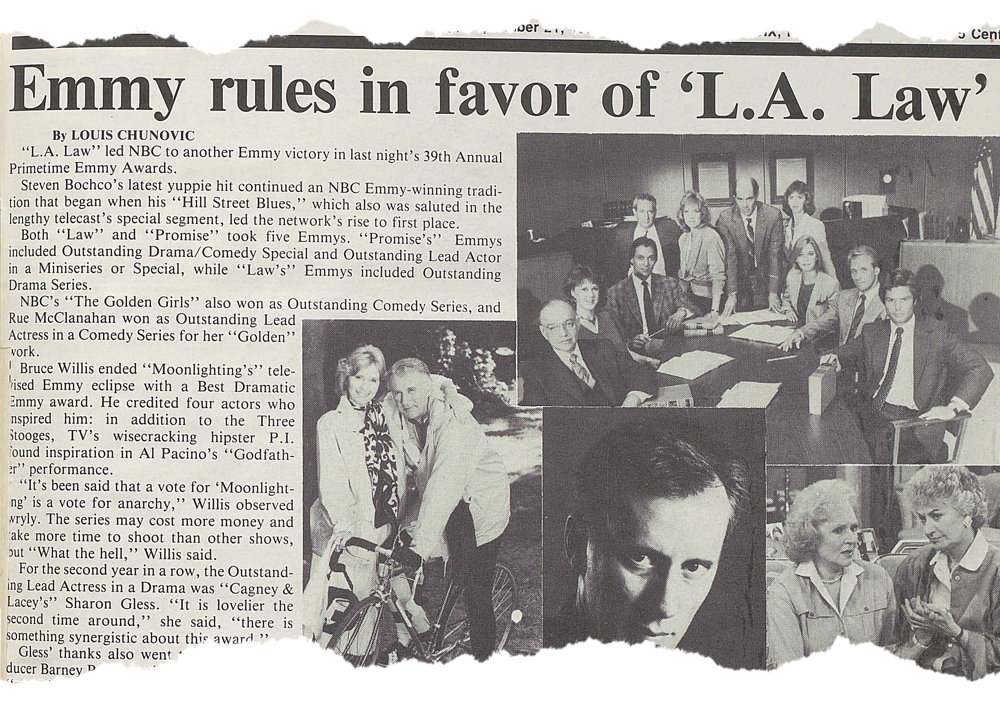
The Hollywood Reporter

“A storybook tale of corporate law offices in the City of Angels” is how The Hollywood Reporter described Steven Bochco’s new NBC drama series, L.A. Law, in October 1986.
The show, which centered on the lives of the partners, associates and staff of a fictional Los Angeles law firm, was co-created by Bochco and Terry Louise Fisher, a former L.A. County prosecutor who had served as a writer and producer on Cagney & Lacey. Bochco had already created a hit for NBC in Hill Street Blues, which won four consecutive drama series Emmys, and his success would continue with L.A. Law. In 1987, the show took home five Emmys for its debut season, including outstanding drama series. L.A. Law‘s ensemble cast — featuring Richard Dysart, Corbin Bernsen, Susan Dey, Harry Hamlin, Jimmy Smits, Jill Eikenberry, Larry Drake, Michael Tucker and Blair Underwood, among others — also garnered Emmy nominations, with winning turns over the years from Smits, Dysart, Drake and guest star Alfre Woodard.
Over eight seasons, L.A. Law earned 89 Emmy noms and won 15 statuettes. Upon its fourth win as best drama series in 1991, it tied Hill Street Blues for the most wins in the category. That record has never been topped, though future shows The West Wing, Mad Men and Game of Thrones would also join the four-timers’ club.
It was arguably the show’s sharp scripts that made L.A. Law stand out from the pack: “The writing has been skewed and angled, a kicky take on the field of lawyering and its attendant highs and lows,” remarked THR in an October 1987 review.
Scribe and executive producer David E. Kelley — who picked up 13 nominations and five wins for his work on the series and went on to create Emmy darlings like Ally McBeal and Big Little Lies — paid tribute to his canceled competitors (China Beach and Thirtysomething) while accepting the writing trophy in 1991, saying it “is truly an honor to be nominated with you … We’ll miss seeing you on the air.” Three years later, L.A. Law would make its final bow as well.

The Hollywood Reporter
This story first appeared in an August stand-alone issue of The Hollywood Reporter magazine.